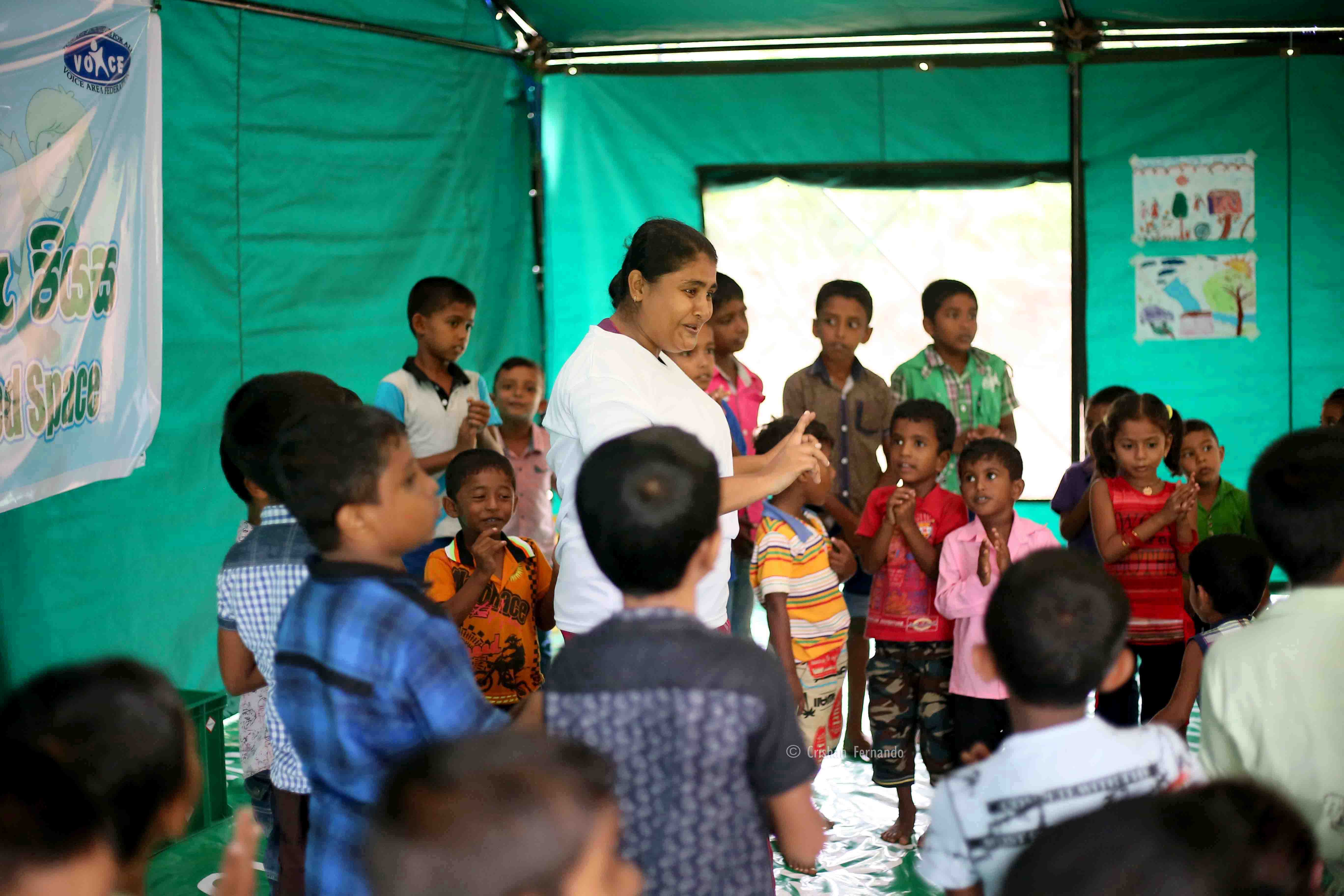Child Protection: Everyone’s Responsibility.
Children are the most vulnerable and unprotected section of any society facing disasters whether natural or man-made. The situation becomes more catastrophic for children if the central government or local government lacks systems, procedures and mechanisms to manage disasters as there is more possibility of negative impact on children. Children may have a bigger risk of different diseases, malnutrition and they may become the prey of abuse, neglect, violence including gender-based violence as well as exploitation and a wider range of other violations including injury and death.
Sri Lanka faces challenges in ensuring child protection as a country experiences frequent hazards with regional disparities of extreme poverty and political instability. Similarly according to the Climate Risk Index for 2016, Sri Lanka has been identified as one of the ten countries that are most affected by disasters.
When narrowed down to the situation of the Puttalam District, it has been most affected by floods and drought (DMC situation reports in 2016-2018). Especially northern part of the Puttalam District is severely affected by above mentioned the natural disasters. Divisional Secretariat of Karuwalagaswewa is situated in the northern end of the district adjoining Anuradhapura District, where the extreme poverty is prevalent among the human habitats (Poverty Index 2018, Karuwalagaswewa DSD). Thus the socio-economic situation of Karuwalagaswewa DSD is not favourable in facing natural disasters like floods and drought. According to the child poverty indicators, it has been identified that most of the children are deprived, excluded and vulnerable. Under these general circumstances of the regional disparities, children are the most vulnerable fragment of the society in times of disaster situations. Protection needs for children in emergencies such as: protection from physical harms, protection from exploitation and gender-based violence, protection from psychosocial distress, protection from family separation, protection from abuse related to forced displacement, protection from denial of children’s access to quality education, are forgotten and neglected by the parents and also by the relevant duty bearers. In view of assuring these child protection needs in emergencies, VOICE Area Federation has introduced Community-Based Child-Centered Spaces in Karuwalagaswewa DSD and it had been witnessed to be the best model ever by the communities and the Local Government Authorities. Hence the main objective of the study is to seek the successfulness and efficiency of the model and to way forward its recommendations.
Community-Based Child Protection Committees and Networks have integrated and used a range of methodologies that depending on the context and environment. Identifying the types of risks confronting children or the ability of families and the community to provide care for and meet the needs of children. Identifying vulnerable children and trying to understand the reasons or causes of their vulnerability. This may also involve keeping a simple register of children experiencing protection concerns and the reasons why; or in an emergency situation, identifying children separated from their families and linking them to family-tracing activities. Mapping out the resources or services that can provide support to children and families. Referring or helping children and families access local services by bringing them to the attention of service providers or groups who can help address their needs, such as access to welfare support, medical attention, food, shelter and education. Facilitating as a focal point for reporting child protection concerns, including physical or sexual abuse, violence or exploitation. Coordinating activities within the community in support of the child and family welfare. Engaging in discussions with children and families on the issues that affect them on an ongoing basis and working with the community to find or develop appropriate solutions. Supporting and promoting the genuine participation of children in decision-making that affects their lives – in part by modelling good practices of communication between adults and children and respecting the views of children.
Community-Based Child-Centered Space was first initiated in 2016 in two flood-affected communities in Karuwalagaswewa DSD (Munmalgawewa, Saliya C, PahalaPuliyankulama, Thambapanniya and Thevanuwa GNDs). Later in 2018 (Thevanuwara, Thambapanniya) also it was conducted during the month of May. According to the organizational records and the records kept by respective Grama Niladhari officers of the affected GNDs 76 children had been affected by the flash flood in 2016 and 32 in 2016. All these children were looked after 8hours per day by the trained youth volunteers who conducted Community Based Child-Centered Spaces.
Moreover, the participation of the youth for the CBCCS activities is noticeably positive. 30 of leading youth individuals from the adjoining GNDs, were selected as the volunteer- facilitators of the CBCCS. Series of training was conducted to enhance their facilitation in the evacuation centres. Having a separate space for children in the times of flood inundation was, on one hand, an additional help on the side of the people affected since they were focusing on the reconstruction and cleaning processes. All the protection needs for children in emergencies such as : protection from physical harms, protection from exploitation and gender-based violence, protection from psychosocial distress, protection from family separation, protection from abuse related to forced displacement, protection from denial of children’s access to quality education, were assured and well addressed in the Community Based Child-Centered Spaces conducted.
Irrespective of scale or nature of the disaster, the vulnerability of the child to abuse during the post-disaster time is very high. Loss of keens, separation from family, loss of livelihood, discontinuation to education causes trauma, fear and other psycho-social disorders among children. Parental neglect in such circumstances tends to be high which adds to the vulnerability of a child towards exploitation. Strong preparedness and professional interventions like Community-Based Child-Centered Space is much necessary to prevent abuse and exploitation of children affected by emergencies. VOICE Area Federation is committed to reduction children’s vulnerability during emergencies. Community-Based Child-Centered Space is a key priority area while developing preventive mechanisms to reduce the protection risks of children during an emergency situation.
Donate For This Project




